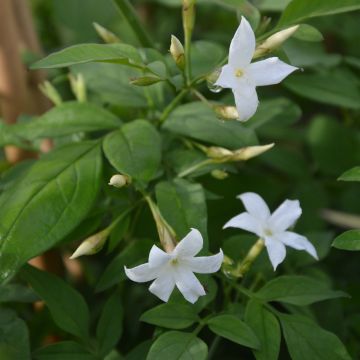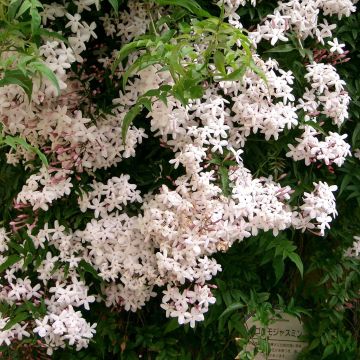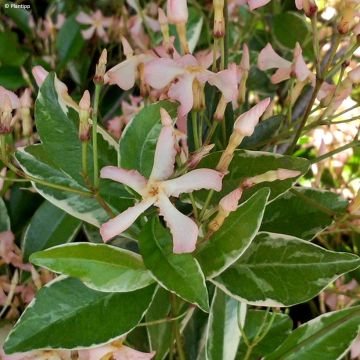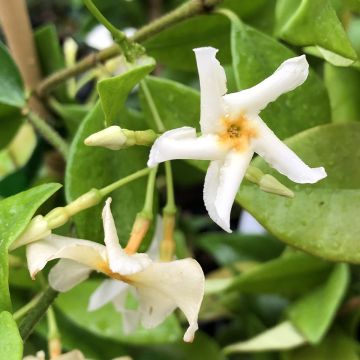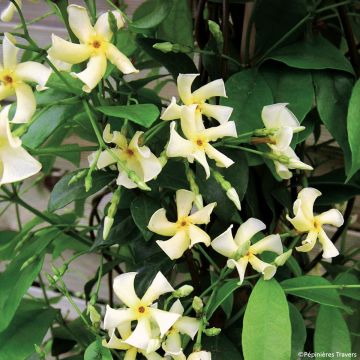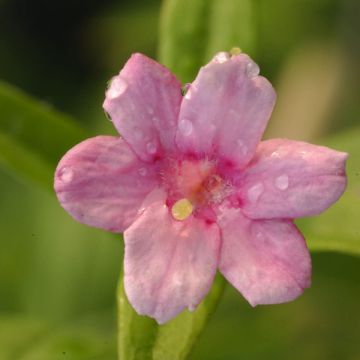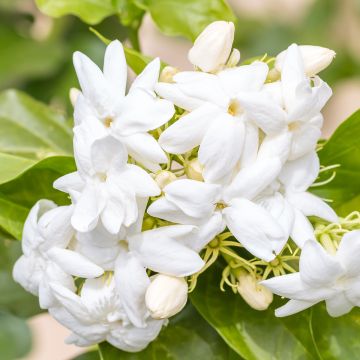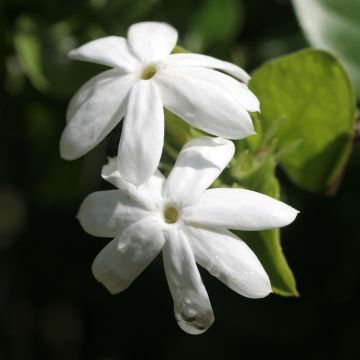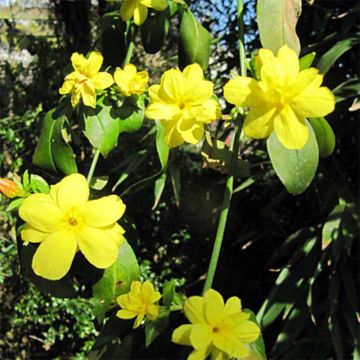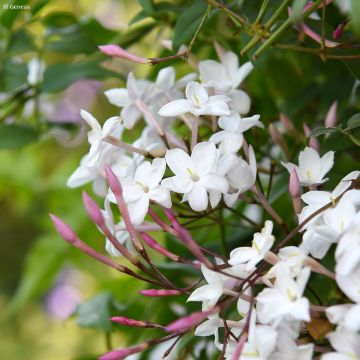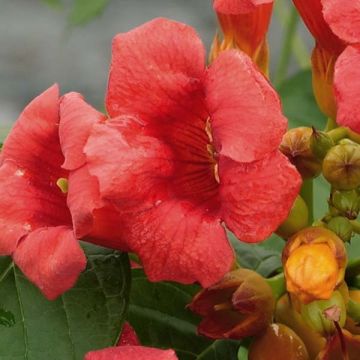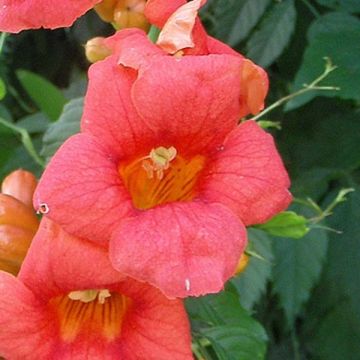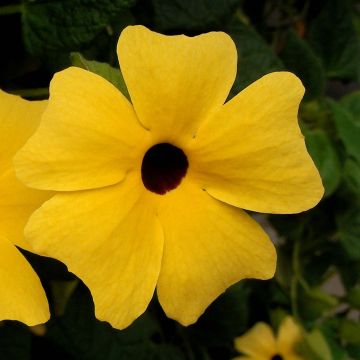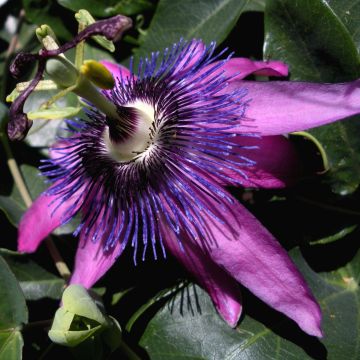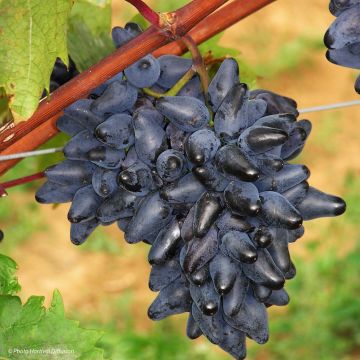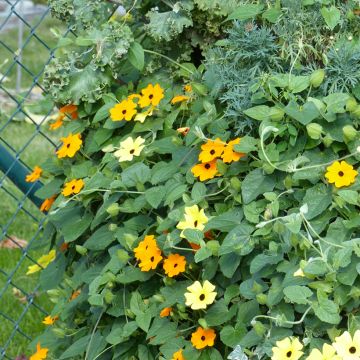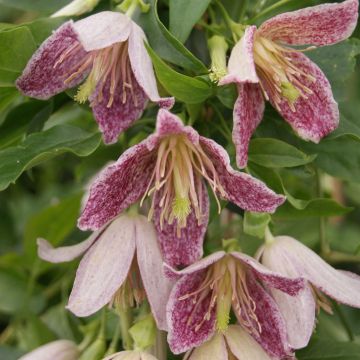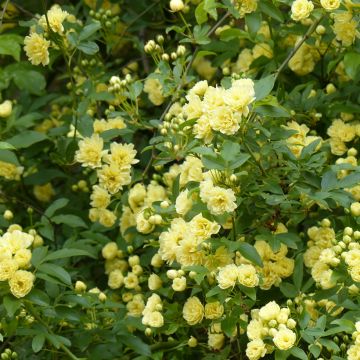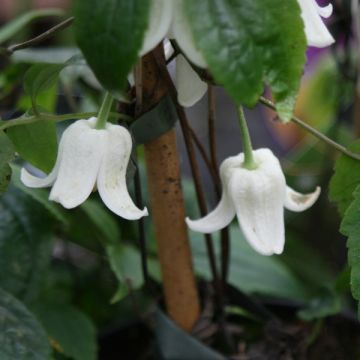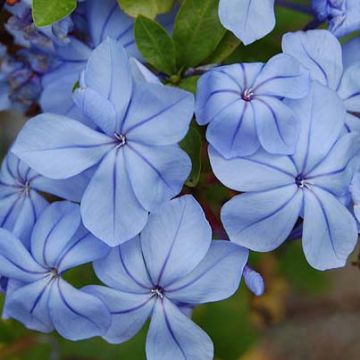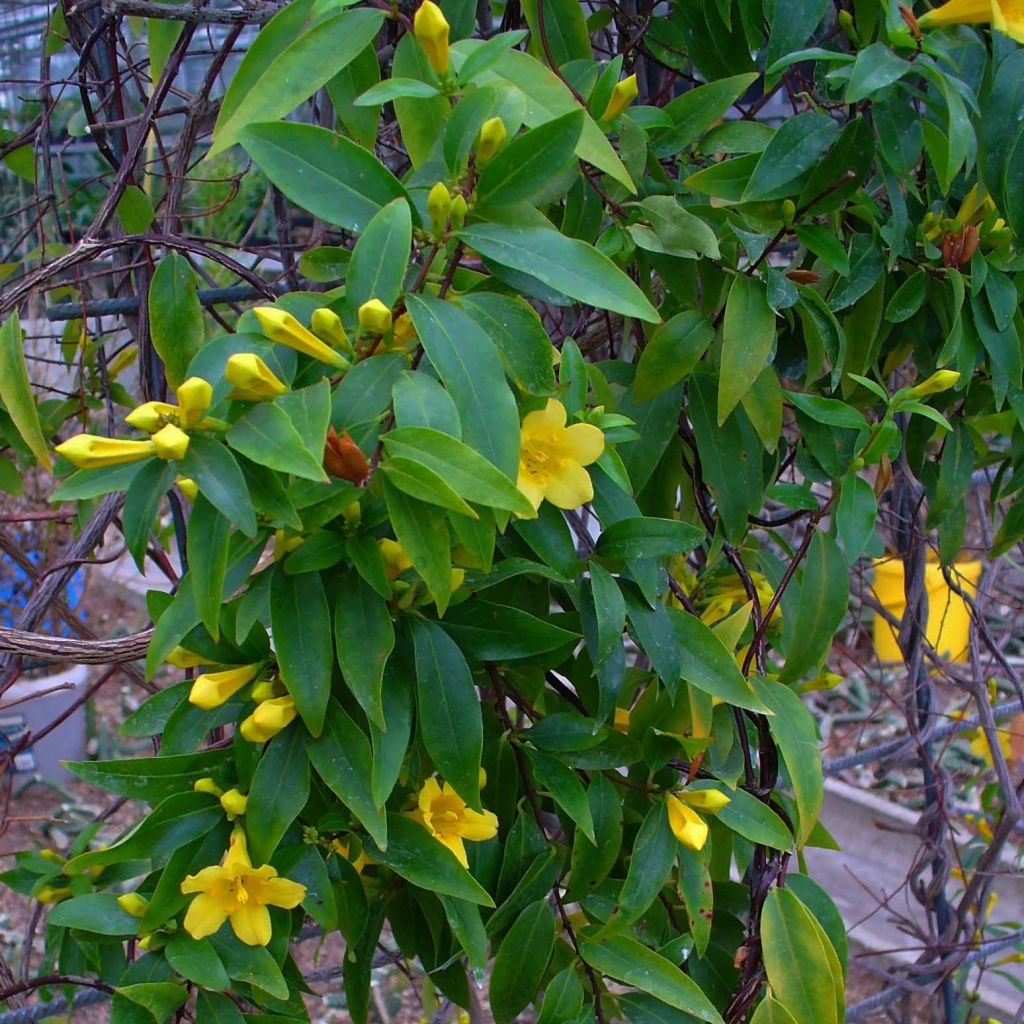

Gelsemium sempervirens - Yellow jessamine
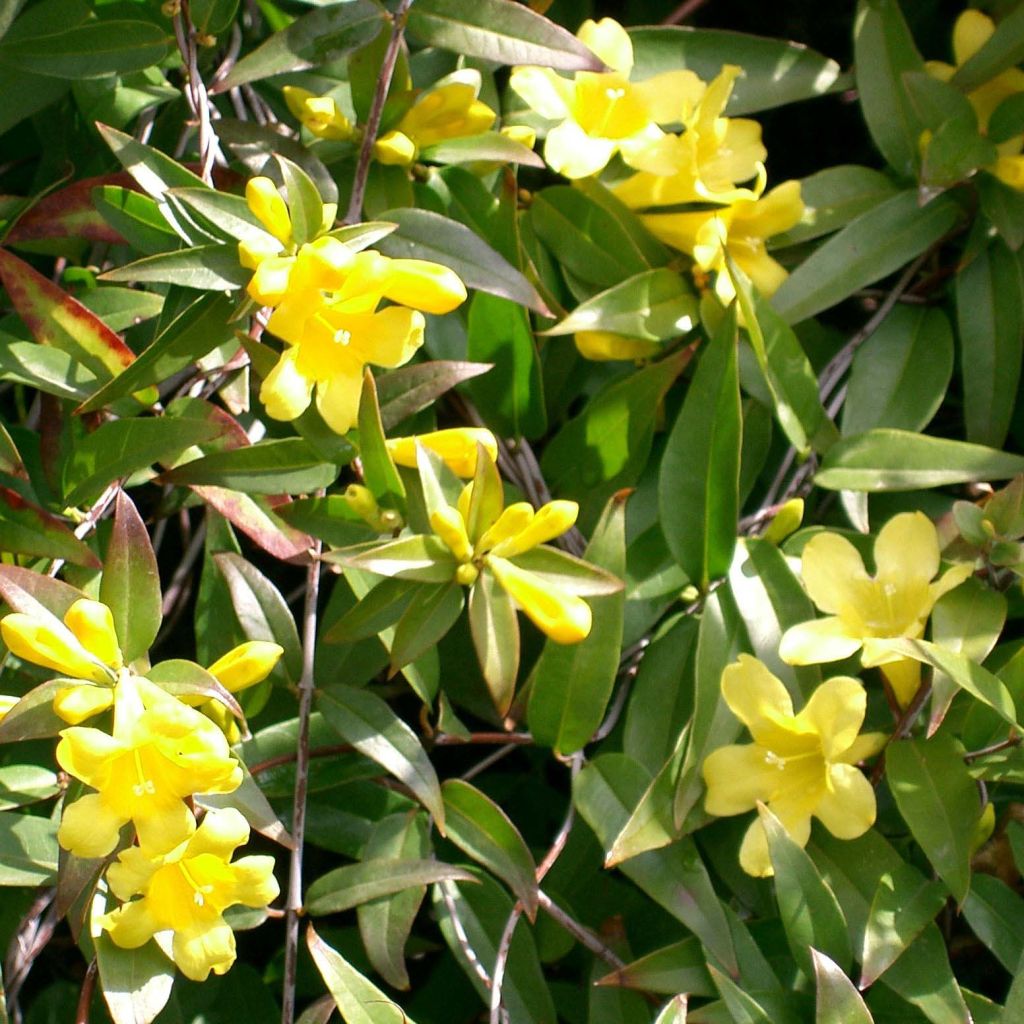

Gelsemium sempervirens - Yellow jessamine
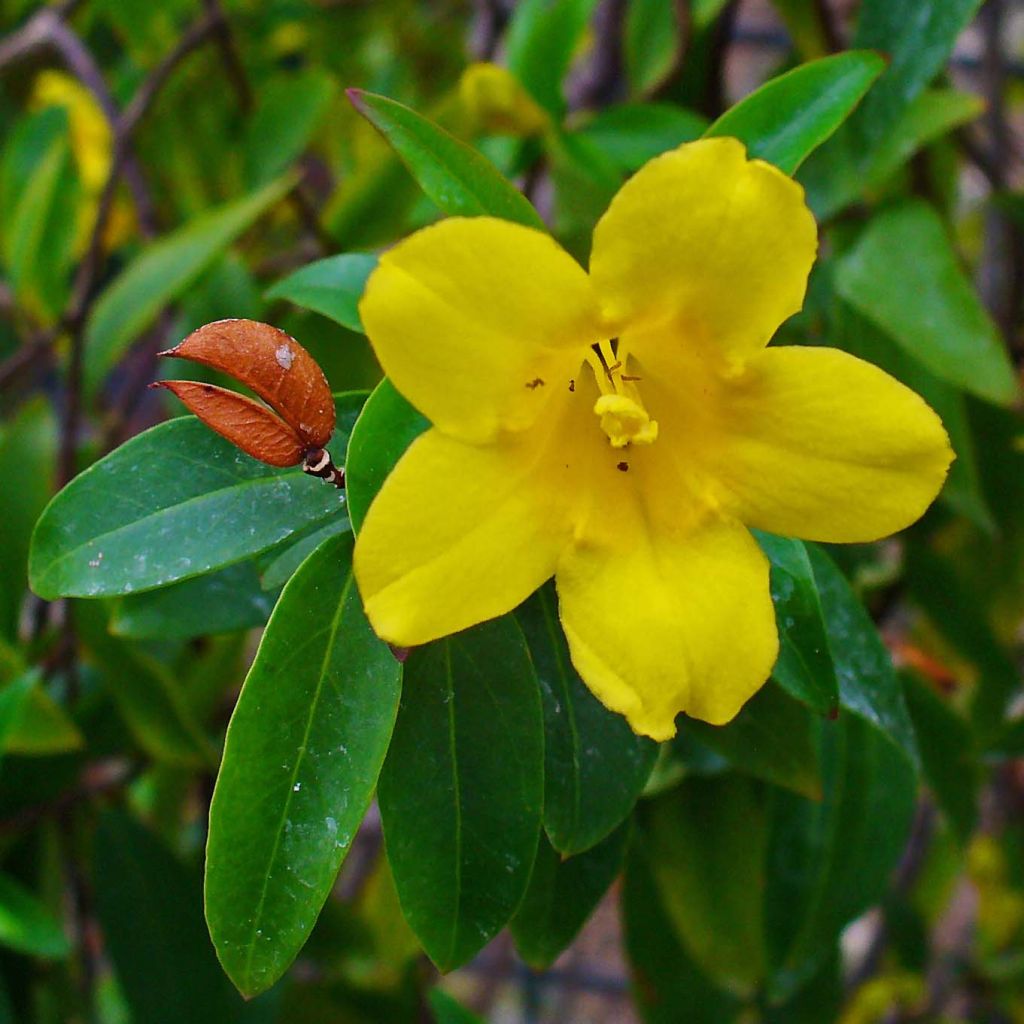

Gelsemium sempervirens - Yellow jessamine
Gelsemium sempervirens - Yellow jessamine
Gelsemium sempervirens
Carolina Jessamine, Carolina Yellow Jessamine, Evening Trumpet Flower, Carolina Jasmine, Carolina Yellow Jasmine
This item cannot be shipped to the selected country
Delivery charge from €5.90
More information
Schedule delivery date,
and select date in basket
This plant carries a 6 months recovery warranty
More information
We guarantee the quality of our plants for a full growing cycle, and will replace at our expense any plant that fails to recover under normal climatic and planting conditions.
From €5.90 for pickup delivery and €6.90 for home delivery
Express home delivery from €8.90.


Does this plant fit my garden?
Set up your Plantfit profile →
Description
Gelsemium sempervirens, also known as Evergreen Gelsemium, is a climbing perennial plant with beautiful yellow flowers with a sweet fragrance. Despite its charm, it is rarely planted in gardens due to its low cold resistance, which limits its hardiness to -5/-6°C (23/21.2°F). This species, sometimes called Evening Trumpet Flower or Carolina Jasmine is however well-known in the world of homeopathy. With rapid growth, it does not exceed 3 metres (10 feet) tall, adorns itself with beautiful shiny foliage, and can perfume, in spring, a whole section of the garden or terrace. Apart from its susceptibility to cold, it is an easy plant to acclimatise to partial shade, in ordinary soil.
Gelsemium sempervirens belongs to the Loganiaceae family. Native to the Southeastern United States, specifically the states of Carolina, Virginia, Tennessee, and the Eastern part of Texas, it is also found in northern Mexico and southern Guatemala. It grows in brush, woods, forests, pine forests, and fallow land. Not very hardy, it can only be grown in open ground in areas where the temperature does not drop below -5/-6°C (23/21.2°F) for short periods. This small perennial liana will not exceed 3m (10ft) in all directions, with a rapid growth rate. Flowering is quite brief but abundant in spring or early summer, and it sometimes blooms again in autumn in hot and dry climates, thanks to the return of rain. The plant produces, on short stems, in the axil of the leaves, clusters of tubular flowers measuring 3cm (1in), with a soft yellow colour and a pleasant fragrance that attracts many pollinating insects. The fruits produced are small, round, and flattened capsules. The evergreen foliage is composed of leathery leaves, shiny dark green, taking on bronze to violet hues in cold weather. These leaves, 4 to 8 cm (2 to 3in) long and 2 to 3cm (1in) wide, are opposite, lanceolate in shape, and have short petioles. They contain a highly toxic substance for humans, while the plant's roots are used in the composition of several homoeopathic medicines. The nectar of the flowers, according to some sources, may be harmful to our bees*.
The Carolina Jasmine climbs on bushes, trellises, arches, pergolas, stair railings, or balconies, but also crawls along the ground. Plant it in a container on a terrace to fully enjoy its intense fragrance. In its country of origin, this small liana is widely used in urban gardens, where it is planted along fences and walls. It could be combined, for example, with Sollya heterophylla, a purple passionflower (Passiflora Incense), or a white one (Snow Queen), which would take over its flowering in the heart of summer.
*Some studies tend to suspect that the nectar of Gelsemium sempervirens may be harmful to bees due to the presence of gelsemine, a potentially harmful alkaloid for the hive, and possibly for humans consuming honey made from a large quantity of these flowers. In the absence of more in-depth and precise data, it is recommended to cultivate this plant preferably in a closed space such as a greenhouse or conservatory, devoid of pollinating insects.
Report an error about the product description
Gelsemium sempervirens - Yellow jessamine in pictures
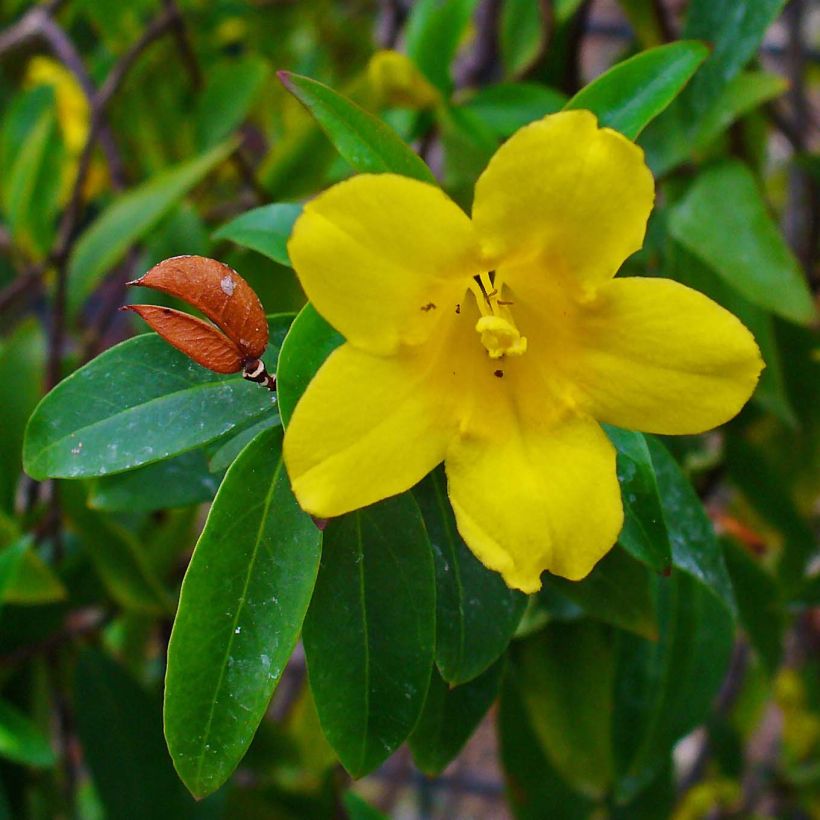

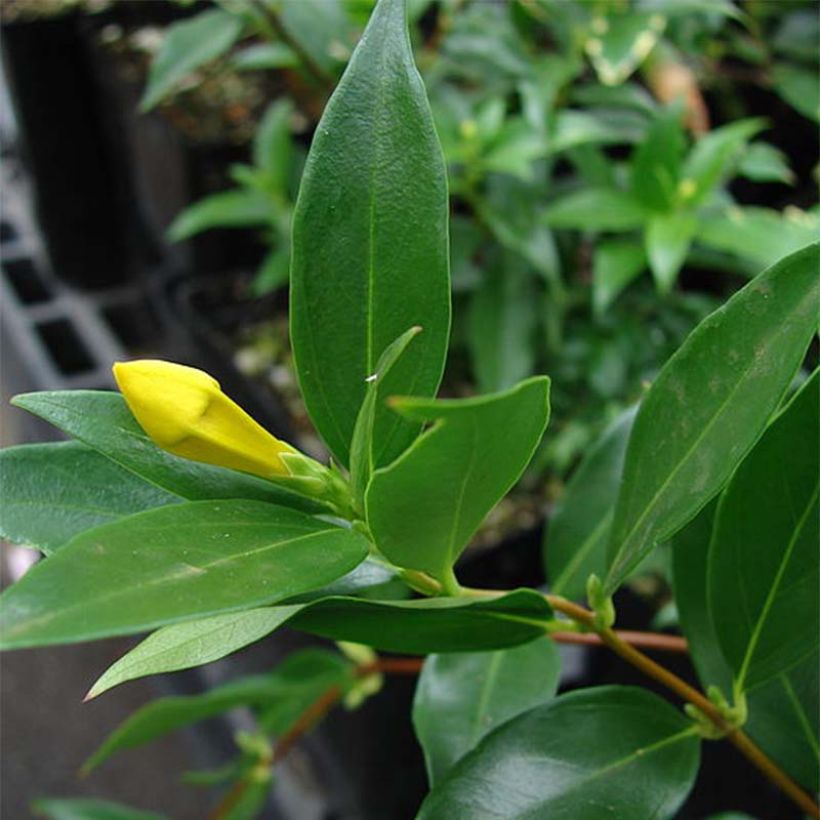

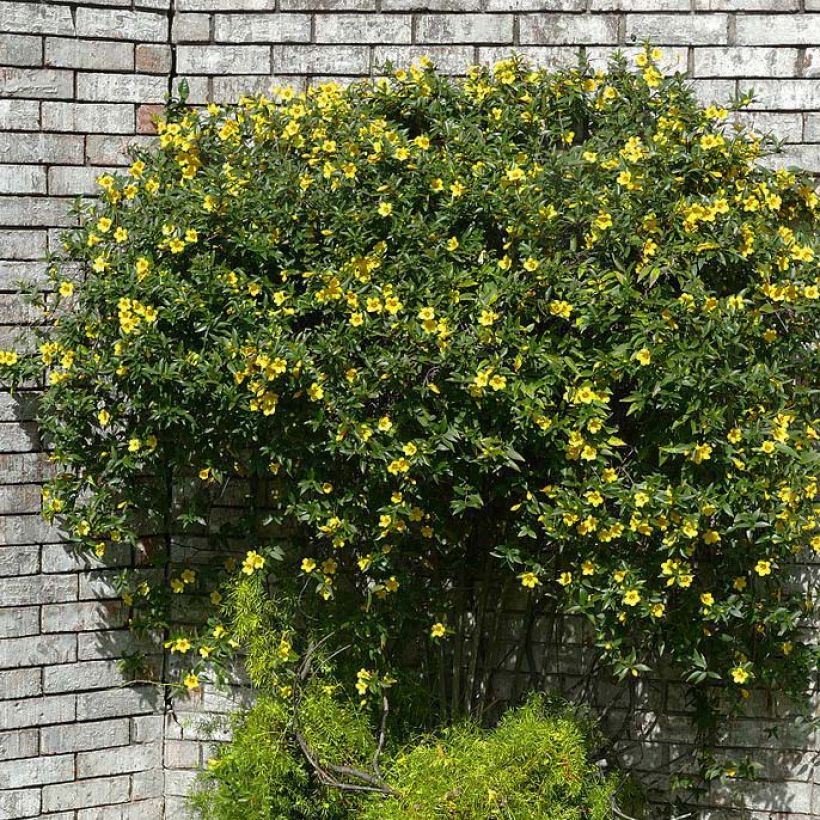

Plant habit
Flowering
Foliage
Botanical data
Gelsemium
sempervirens
Loganiaceae
Carolina Jessamine, Carolina Yellow Jessamine, Evening Trumpet Flower, Carolina Jasmine, Carolina Yellow Jasmine
North America
Other Jasmine
Planting and care
Gelsimium sempervirens is planted in spring, in open ground in very mild climates or in a pot anywhere else. Plant it in a loose soil, enriched with humus, fertile, and kept moist to help it establish. It requires well-drained soil and will thrive in a semi-shaded and sheltered position from cold winds, even in shade in hot climates. The Carolina Jasmine tolerates drought quite well once established but requires a moist soil to support its flowering. In dry climates, this flowering is shortened but often resumes in autumn. Mulch the base and water generously as soon as the flowers appear. When the temperature drops below -5°C (23°F), the aboveground parts are destroyed. But if the stump is well established, new shoots will emerge in spring. Avoid exposing it to cold drafts to preserve its flowers. For pot cultivation: choose a container of 50cm (20in), with good, rich, moist and light soil, specially designed for Mediterranean plants. From early spring until mid-September, enrich with liquid fertiliser every 15 days, always on moist soil. In summer, it needs abundant watering, but in winter let the soil dry well between two waterings. The Carolina Jasmine needs to be pruned after flowering to encourage another flush. In winter, place it in a conservatory or a temperate greenhouse, around 16°C (60.8°F) and with plenty of light. Regularly spray the foliage with lime-free water, this will prevent attacks from red spider mites.
Planting period
Intended location
Care
-
, onOrder confirmed
Reply from on Promesse de fleurs
Mediterranean climbers
Haven't found what you were looking for?
Hardiness is the lowest winter temperature a plant can endure without suffering serious damage or even dying. However, hardiness is affected by location (a sheltered area, such as a patio), protection (winter cover) and soil type (hardiness is improved by well-drained soil).

Photo Sharing Terms & Conditions
In order to encourage gardeners to interact and share their experiences, Promesse de fleurs offers various media enabling content to be uploaded onto its Site - in particular via the ‘Photo sharing’ module.
The User agrees to refrain from:
- Posting any content that is illegal, prejudicial, insulting, racist, inciteful to hatred, revisionist, contrary to public decency, that infringes on privacy or on the privacy rights of third parties, in particular the publicity rights of persons and goods, intellectual property rights, or the right to privacy.
- Submitting content on behalf of a third party;
- Impersonate the identity of a third party and/or publish any personal information about a third party;
In general, the User undertakes to refrain from any unethical behaviour.
All Content (in particular text, comments, files, images, photos, videos, creative works, etc.), which may be subject to property or intellectual property rights, image or other private rights, shall remain the property of the User, subject to the limited rights granted by the terms of the licence granted by Promesse de fleurs as stated below. Users are at liberty to publish or not to publish such Content on the Site, notably via the ‘Photo Sharing’ facility, and accept that this Content shall be made public and freely accessible, notably on the Internet.
Users further acknowledge, undertake to have ,and guarantee that they hold all necessary rights and permissions to publish such material on the Site, in particular with regard to the legislation in force pertaining to any privacy, property, intellectual property, image, or contractual rights, or rights of any other nature. By publishing such Content on the Site, Users acknowledge accepting full liability as publishers of the Content within the meaning of the law, and grant Promesse de fleurs, free of charge, an inclusive, worldwide licence for the said Content for the entire duration of its publication, including all reproduction, representation, up/downloading, displaying, performing, transmission, and storage rights.
Users also grant permission for their name to be linked to the Content and accept that this link may not always be made available.
By engaging in posting material, Users consent to their Content becoming automatically accessible on the Internet, in particular on other sites and/or blogs and/or web pages of the Promesse de fleurs site, including in particular social pages and the Promesse de fleurs catalogue.
Users may secure the removal of entrusted content free of charge by issuing a simple request via our contact form.
The flowering period indicated on our website applies to countries and regions located in USDA zone 8 (France, the United Kingdom, Ireland, the Netherlands, etc.)
It will vary according to where you live:
- In zones 9 to 10 (Italy, Spain, Greece, etc.), flowering will occur about 2 to 4 weeks earlier.
- In zones 6 to 7 (Germany, Poland, Slovenia, and lower mountainous regions), flowering will be delayed by 2 to 3 weeks.
- In zone 5 (Central Europe, Scandinavia), blooming will be delayed by 3 to 5 weeks.
In temperate climates, pruning of spring-flowering shrubs (forsythia, spireas, etc.) should be done just after flowering.
Pruning of summer-flowering shrubs (Indian Lilac, Perovskia, etc.) can be done in winter or spring.
In cold regions as well as with frost-sensitive plants, avoid pruning too early when severe frosts may still occur.
The planting period indicated on our website applies to countries and regions located in USDA zone 8 (France, United Kingdom, Ireland, Netherlands).
It will vary according to where you live:
- In Mediterranean zones (Marseille, Madrid, Milan, etc.), autumn and winter are the best planting periods.
- In continental zones (Strasbourg, Munich, Vienna, etc.), delay planting by 2 to 3 weeks in spring and bring it forward by 2 to 4 weeks in autumn.
- In mountainous regions (the Alps, Pyrenees, Carpathians, etc.), it is best to plant in late spring (May-June) or late summer (August-September).
The harvesting period indicated on our website applies to countries and regions in USDA zone 8 (France, England, Ireland, the Netherlands).
In colder areas (Scandinavia, Poland, Austria...) fruit and vegetable harvests are likely to be delayed by 3-4 weeks.
In warmer areas (Italy, Spain, Greece, etc.), harvesting will probably take place earlier, depending on weather conditions.
The sowing periods indicated on our website apply to countries and regions within USDA Zone 8 (France, UK, Ireland, Netherlands).
In colder areas (Scandinavia, Poland, Austria...), delay any outdoor sowing by 3-4 weeks, or sow under glass.
In warmer climes (Italy, Spain, Greece, etc.), bring outdoor sowing forward by a few weeks.

































